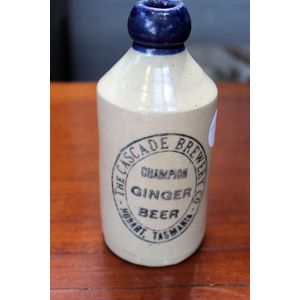Ansonia Don Caesar Figural Clock
Vintage Ansonia figural Don Caesar spelter clock depicting the figure of the Cavalier, Don Caesar, on wood base, key and pendulum available, height 54 cm, width 50 cm
You must be a subscriber, and be logged in to view price and dealer details.
Subscribe Now to view actual auction price for this item
When you subscribe, you have the option of setting the currency in which to display prices to $Au, $US, $NZ or Stg.
This item has been sold, and the description, image and price are for reference purposes only.
- Spelter - Spelter was the name given to an alloy of zinc and brass or copper used in the 19th century for statuary and lighting. It is a brittle bluish-white metal. It was used as a cheap replacement for bronze, but being brittle easily breaks and can't be repaired. When finished it can often be mistaken for bronze, but if discreet a scratch on the base displays shows a greyish colour, the metal is spelter, if a golden colour the metal is most likely bronze.
- Pendulum - The pendulum was discovered around 1602 by Galileo Galilei, and was adopted for time keeping by the Dutch mathematician and natural philosopher, Christiaan Huygens, who excelled in astronomy, physics, and horology.
The pendulum comprises a metal rod usually of brass or steel with a metal disk, known as a bob, at the end. The movement of the pendulum is driven by weights or a spring, and as a pendulum swings in a regular arc, it was found accuracy could be controlled to within a few seconds a week.
Timekeeping can be adjusted by changing the height of the bob on the rod, making the pendulum either swing slower or faster.
The disadvantage of the pendulum was that changes in temperature also changed the length of the pendulum, interfering with the accuracy of the clock, and so in the 18th century two types of mercurial pendulums were invented which countered the movement in the steel rod.
The pendulum was the world's most accurate timekeeping technology until the invention of the quartz clock, regulated by a quartz crystal, in 1927.
This item has been included into following indexes:
Visually similar items

A Hobo bag by Gucci, styled in ponyhair dyed as tanand white zebra print, with brown leather trim adn handles and gold metal hardware, 30 x 37 x 1 cm.
Sold by
in
for
You can display prices in $Au, $US, $NZ or Stg.

Cascade brewery champion ginger beer bottle
Sold by
in
for
You can display prices in $Au, $US, $NZ or Stg.

A Wedgwood vase by Keith Murray hand turned bands with a green glaze. Hairline to the rim. Height 15 cm
Sold by
in
for
You can display prices in $Au, $US, $NZ or Stg.

A Lladro figure of a girl with her doll, printed and incised marks to base. Height 22 cm
Sold by
in
for
You can display prices in $Au, $US, $NZ or Stg.
